Recent Water Damage Posts
A Guide to Dealing with Mold and Mildew After Water Damage
10/21/2023 (Permalink)
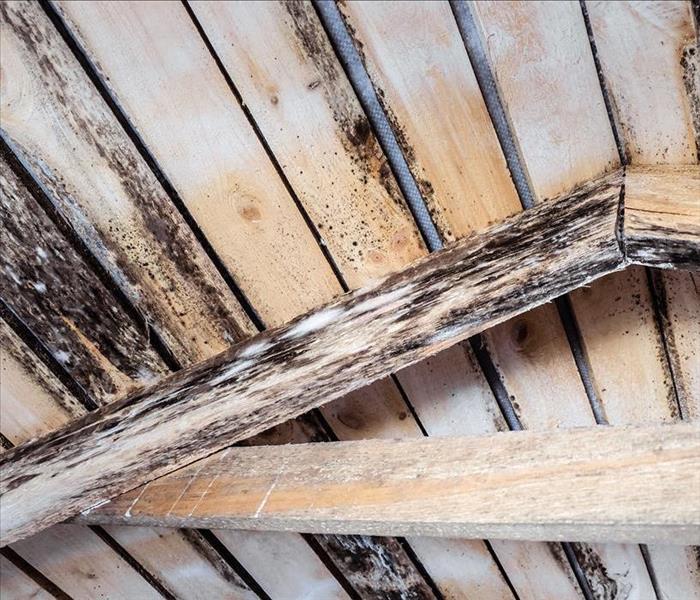 Water damage in homes and properties can result in more than just physical damage and costly repairs; it can also lead to mold and mildew growth.
Water damage in homes and properties can result in more than just physical damage and costly repairs; it can also lead to mold and mildew growth.
Water damage in homes and properties can result in more than just physical damage and costly repairs; it can also lead to the growth of mold and mildew. This can pose significant risks to occupants and residents, making it a crucial issue to address in the aftermath of water damage. In this blog post, we will explore the dangers of mold and mildew, their causes, and steps to take to handle and prevent them.
Dangers of Mold and Mildew
Mold and mildew are types of fungi that thrive in moist environments and can grow rapidly after water damage. Exposure to mold and mildew can lead to various health risks, including respiratory problems, headaches, allergies, and skin irritation. Additionally, if left unchecked, mold and mildew can cause significant structural damage to the home or property, affecting walls, floors, and furniture.
Causes of Mold and Mildew
Mold and mildew growth is typically a result of excess moisture and humidity. Some common causes of water damage that can lead to mold and mildew growth include floods or heavy rain. Flooding or heavy rainfall can cause water intrusion into the property, creating the ideal setting for mold and mildew growth.
Leaks or burst pipes
Any leaks or burst pipes, regardless of their size, can cause water to flood the property, leading to mold and mildew growth.
Poorly ventilated areas
Humidity from poor ventilation in areas like bathrooms or basements can create the ideal environment for mold and mildew growth.
Long term moisture
Long-term moisture, such as that caused by roof leaks or insufficient drainage, can lead to chronic water damage, increasing the chances of mold growth.
Steps to Handle Mold and Mildew
When water damage occurs, it is critical to act quickly to prevent the growth of mold and mildew. Remove excess water using a wet/dry vacuum or similar equipment, and dry out the affected areas promptly.
Inspect the property
Carefully inspect the affected areas for signs of mold or mildew. Look for visible signs, such as fuzzy or discolored patches on surfaces, or musty odors, which are typical indicators.
Use appropriate cleaning methods
Use approved mold/mildew cleaning solutions and equipment, such as masks and gloves, to clean affected surfaces thoroughly. Properly dispose of contaminated materials and equipment to prevent further spread.
Address underlying causes
While cleaning mold and mildew is essential, it is equally vital to address the underlying cause of water damage to prevent future growth incidents. Proper ventilation, drainage improvements, and regular maintenance can help tackle the problem's source.
Prevention is Key
Prevention is the best way to avoid the growth of mold and mildew after water damage. Regular inspections, proper ventilation, and maintaining optimal indoor humidity levels can prevent the conditions that encourage mold and mildew growth. Additionally, ensuring proper drainage and handling leaks immediately can help avoid costly repairs and health risks.
Mold and mildew growth after water damage can have serious consequences for both occupants and property, highlighting the importance of acting fast and taking preventive measures. By addressing the source of water damage and following proper cleaning protocols, you can effectively handle mold and mildew, and restore your property to its pre-damage condition.
Flood Damage vs. Sewage Damage: Understanding the Differences and How to Handle Both
7/25/2023 (Permalink)
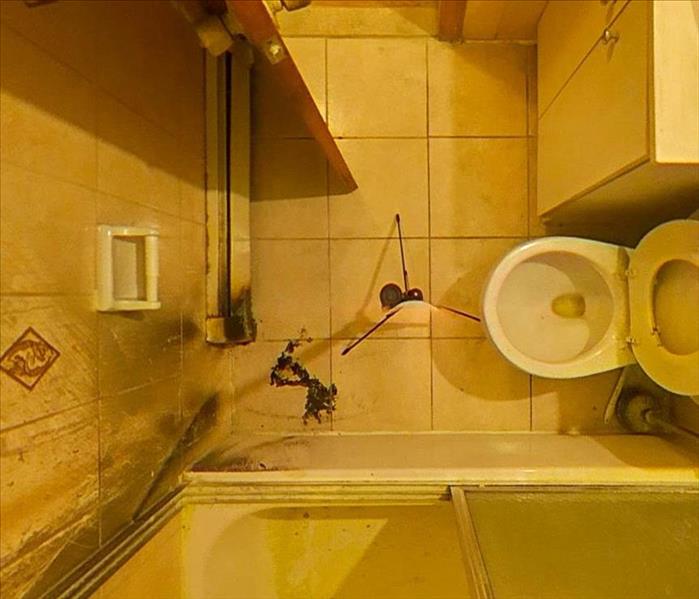 It's important you know the difference between flood damage and sewage damage! Here is what makes them different and how to handle each type.
It's important you know the difference between flood damage and sewage damage! Here is what makes them different and how to handle each type.
Natural disasters and plumbing issues can wreak havoc on our homes, leading to different types of damage that require unique approaches for cleanup and restoration. Flood damage and sewage damage are two such scenarios that may seem similar at first glance but have distinct characteristics and risks. As a homeowner, knowing how to differentiate between flood damage and sewage damage is crucial in taking the right actions to mitigate the effects. In this blog, we will explore the key differences between these two types of damage and guide you on how to handle each situation effectively.
1. Identifying Flood Damage
Flood damage occurs when an excessive amount of water enters your home from an external source. This can happen due to heavy rainfall, river overflow, storm surges, or melting snow. Key signs of flood damage include:
a. Visible Water Intrusion: Pooled water on the floors, soaked carpets, and water stains on walls are common indicators of flood damage.
b. Muddy Residue: Floodwaters often carry mud and debris, leaving a muddy residue once the water recedes.
c. Exterior Water Source: Flood damage is typically associated with a noticeable external water source, such as a nearby river, ocean, or severe weather event.
2. Recognizing Sewage Damage
Sewage damage, on the other hand, occurs when contaminated water from sewer lines backs up into your home due to blockages or system failures. The signs of sewage damage are distinct:
a. Foul Odor: The presence of a strong, unpleasant smell of sewage is a clear indication of sewage damage.
b. Dark and Unsanitary Water: Sewage water is usually dark in color and contains harmful bacteria, making it hazardous to your health.
c. Multiple Drain Backup: If multiple drains in your home are backing up simultaneously, it suggests a sewage issue rather than a localized plumbing problem.
3. Immediate Actions for Both Types of Damage
While the signs of flood damage and sewage damage differ, certain immediate actions apply to both scenarios. First, it is important to always prioritize your safety and that of your family. Avoid contact with flood or sewage water as they may contain harmful contaminants. Secondly, if safe to do so, turn off the electricity to avoid potential electrical hazards in flooded areas. Lastly, reach out to a reputable water damage restoration company like SERVPRO of Ozone Park/Jamaica Bay as soon as possible. They have the expertise and equipment to handle both flood and sewage damage safely and efficiently.
4. Cleanup and Restoration Process
The cleanup and restoration processes for flood damage and sewage damage will vary due to the different contaminants involved. Professionals will assess the extent of damage, extract water, thoroughly sanitize affected areas, and use advanced drying techniques to prevent further issues like mold growth.
5. Preventive Measures
To reduce the risk of flood damage, consider elevating electrical systems and appliances above potential flood levels, installing sump pumps, and ensuring proper drainage around your property. For sewage damage prevention, conduct regular maintenance of your sewer lines, avoid flushing non-biodegradable items down the toilet, and install backwater valves.
Understanding the differences between flood damage and sewage damage is vital for homeowners in taking appropriate actions during emergencies. Both scenarios require prompt and professional attention to ensure a safe and effective cleanup and restoration process. By recognizing the signs of each type of damage and following preventive measures, you can protect your home and loved ones from the devastating effects of water-related incidents and be better prepared to handle such situations in the future. Remember, when in doubt, don't hesitate to contact a trusted water damage restoration expert like SERVPRO of Ozone Park/Jamaica Bay for swift and efficient assistance.
5 Things to Avoid After Experiencing Water Damage
7/18/2023 (Permalink)
Water damage can be a distressing experience for any homeowner. Whether it's a burst pipe, a leaking roof, or a flooded basement, taking immediate action is crucial to mitigate the damage and prevent further complications. However, it's equally important to know what NOT to do after water damage occurs. In this blog post, we'll highlight five common mistakes to avoid to ensure the best possible outcome for your property and minimize losses.
Do NOT Delay Taking Action
One of the biggest mistakes you can make after water damage is delaying the cleanup and restoration process. Standing water and excess moisture can lead to mold growth, structural damage, and other long-term issues. Act promptly by contacting a professional water damage restoration company like [Your Company Name] to assess the situation and initiate the necessary steps for drying, cleanup, and restoration.
Do NOT Enter Standing Water without Proper Precautions
Entering standing water without proper precautions can pose serious health risks. The water may contain contaminants, bacteria, or hazardous substances. Avoid direct contact with the water and ensure that electricity to affected areas is turned off to prevent electrical hazards. Leave the water extraction and cleanup to trained professionals who have the necessary equipment and expertise to handle the situation safely.
Do NOT Neglect Documenting the Damage
Documenting the water damage is essential for insurance claims and restoration purposes. Take photos and videos of the affected areas, including any damaged items or structural issues. This evidence will support your insurance claim and help the restoration professionals understand the extent of the damage, facilitating the restoration process.
Do NOT Attempt DIY Restoration
While it may be tempting to tackle water damage restoration on your own, it's highly recommended to leave it to the professionals. Water damage restoration requires specialized equipment, knowledge, and experience to ensure thorough drying, dehumidification, and proper sanitization. Improper restoration attempts can lead to additional damage, mold growth, and potential risks.
Do NOT Neglect Contacting Your Insurance Company
After experiencing water damage, it's important to notify your insurance company as soon as possible. Familiarize yourself with your insurance policy and understand the coverage and claim process. Provide them with accurate information and the necessary documentation to initiate the claims process promptly. Working with a professional restoration company that has experience in dealing with insurance claims can help streamline the process and ensure a smoother resolution.
Avoiding these common mistakes can make a significant difference in the aftermath of water damage. Remember, time is of the essence when it comes to water damage restoration. Act swiftly, prioritize safety, document the damage, and involve professionals to handle the restoration process. By following these guidelines, you can protect your property, safeguard your health, and maximize your chances of a successful recovery.
For comprehensive water damage restoration services and expert guidance, you can rely on SERVPRO of Ozone Park/Jamaica Bay. Our experienced team is available 24/7 to handle all aspects of water damage restoration, from initial assessment to thorough cleanup and restoration, ensuring your property is restored to its preloss condition.
What Is Secondary Damage and What Types of It Exist?
11/8/2022 (Permalink)
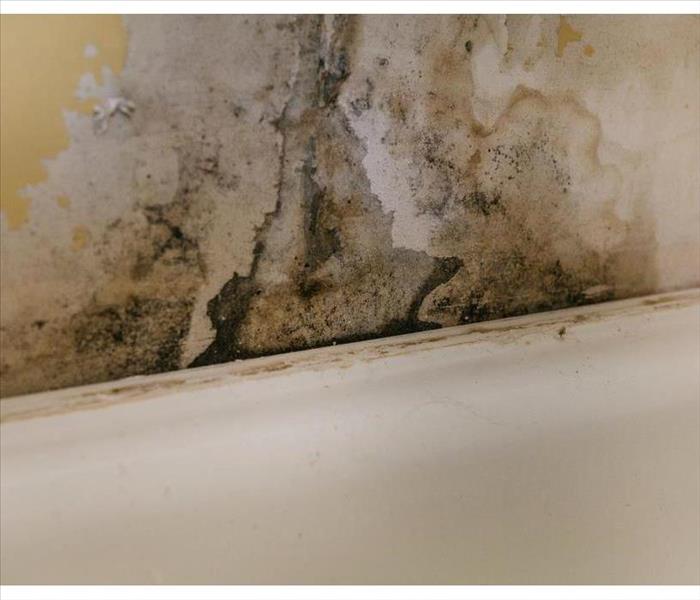 Water damage can lead to mold growth
Water damage can lead to mold growth
What is Secondary Damage and What Types of it Exist?
When your home has been damaged by a natural disaster, the last thing you want to deal with is secondary damage. Secondary damage refers to structural damage that occurs when the primary damage remains unaddressed. There are two types of secondary damages: biological and mechanical. Biological refers to mold and mildew growth, while mechanical refers to rusting, corrosion, and warping. Some secondary damage has to be dealt with right away, while others are more manageable. If you don't handle this type of damage properly, it could lead to more serious issues down the road like premature structural failure or even structural collapse! If you're wondering how we can help repair your home after an unexpected incident occurs: our team of experts at SERVPRO of Ozone Park/Jamaica Bay will get started on making sure your property is safe again as soon as possible!
What Is Secondary Damage?
Secondary damage is damage that occurs after the primary damage. For example, if a flood or fire cause damages to your home, it will most likely be necessary to replace or try and salvage water-damaged items.
When secondary damage occurs, it's best to call in professionals who can help assess the situation and determine how much of the initial problem they can repair themselves before calling in a restoration company.
Types of Secondary Damage
Secondary damage can be either biological or mechanical, with the former including mold and mildew growth, and the latter including rusting, corrosion, and warping.
For example: if you don’t get your car into a shop right away after you notice an oil leak, it will only worsen and become more expensive to fix later.
Secondary Damage Refers to Structural Damage That Occurs When the Primary Damage Remains Unaddressed
This can happen with or without the presence of a disaster if the primary issue is not addressed. Secondary damages are often caused by natural disasters, but they can also be caused by non-disaster factors, like neglecting maintenance on your home or leaving a broken window open during a storm.
When should you call a restoration company? If you notice any of the following signs, it's time to call in an expert:
- Your home or building has suffered water damage from flooding or other sources that shouldn't have happened
- The odor of mould is present in your home (if left untreated)
If you suspect that your home has been affected by secondary damage, immediately contact us. We will come out to your home in Ozone Park, NY and assess the damage. We will provide a free estimate, and we can work with you to get your home back to normal as quickly as possible.
Our team is on standby 24/7. We can help you with any secondary damage your property may be facing. Don’t hesitate to call us at (347) 233- 2305 for an estimate and more information about our services!
3 Common Causes of Basement Floods
8/27/2022 (Permalink)
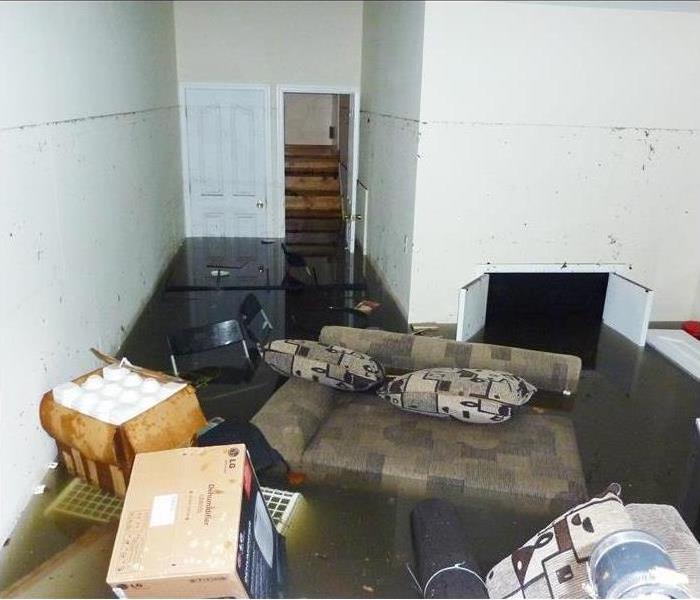 A basement flood is a destructive and stressful situation
A basement flood is a destructive and stressful situation
Steps To Protect Your Home From a Basement Flood
A basement flood is a destructive and stressful situation that homeowners in Jamaica Bay, NY want to avoid. Prevention is key, and there are ways you can protect your home if you are familiar with the causes of water leaks. Here are the most common causes and steps you can take to protect your home.
1. Improper Storm Drainage
When water builds up on the roof or landscape near your home, it will make its way to the lowest point. This is often the basement or crawl space. To prevent water damage, ensure that you clear the gutters of leaves and debris seasonally. Check that the downspouts are aimed away from the house so that water has a clear path to drain into the landscape. If your home sits on a slope, make sure that the ground is properly graded so that water cannot collect and leak into the foundation.
2. Inadequate Sealing
Another common cause of a basement flood is inadequate sealing of the floors and walls. If you notice any damp areas where moisture or mold is present, it’s possible that the area needs to be assessed by a mold remediation specialist before it is professionally resealed. Mold can cause serious damage to the materials of your home, and if left untreated will continue to spread as long as moisture is present.
3. Damaged Outdoor Systems
Leakage from the underground water systems around your home are another way your house can be flooded. Sprinkler systems and piping that carries water into city storm drains are vulnerable to damage from age and weather. If you find a leak that doesn't seem to originate from inside your home, an external system may be the culprit.
Knowing the main causes of a basement flood can help you notice issues before they becomes a bigger problem. If you’re unsure about anything you see, it’s best to call a professional to get an assessment to ensure the proper repairs are made.
4 Steps To Make a Water Damage Claim
7/13/2022 (Permalink)
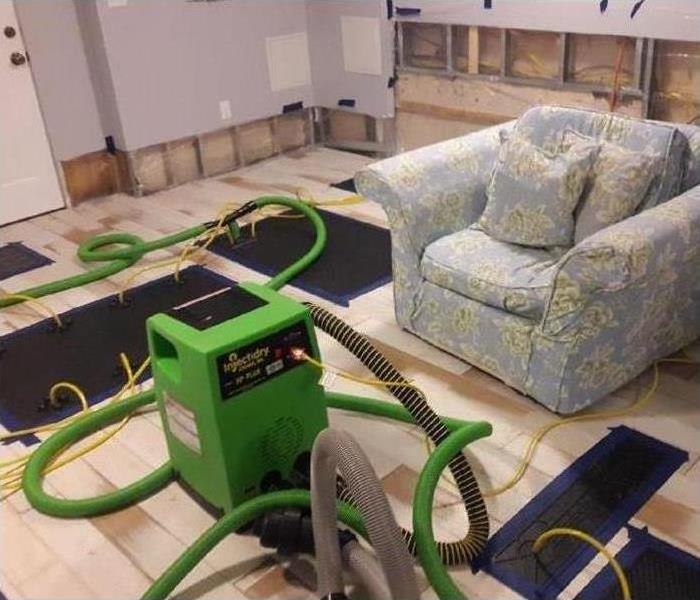 Water damage cleanup in a home in Jamaica, NY.
Water damage cleanup in a home in Jamaica, NY.
Make a Water Damage Claim in Four Easy Steps
A water damage claim is more likely to be approved if a policyholder takes measures to document damage and gather important information. These four steps will guide a homeowner through the process of filing an insurance claim.
1. Review the Policy
It is important to know what a homeowner's insurance policy does and does not cover. Keep in mind that standard home insurance policies only cover water damage due to a pipe burst or leak. An endorsement is usually necessary for sewer backup coverage, and an additional flood policy is needed for damage caused by heavy rains or rising bodies of water.
2. Call Your Agent
Call your insurance agent and let them know about the extent of the damage. It is a good idea to determine whether it is likely that you will file a claim before calling. If the damage is minor and you want to avoid a rate increase, you may want to obtain an estimate from a mitigation service first and pay out of pocket. Some insurance companies require agents and adjusters to report potential claims.
3. Document the Damage
If you plan to file an insurance claim, you will need proof of damage. Capture the extent of the damage in photos or on video. This documentation may be even more useful if you also have dated footage of the residence before the damage took place. It is also useful to gather receipts, dates of purchase, and the prices of damaged contents.
4. Get an Estimate
Contact a water damage cleanup company to obtain an estimate of the total cost of mitigation and restoration. Providing this information to an adjuster can expedite the filing process.
These steps will guide you from determining what your policy will cover to filing an insurance claim. Obtain an estimate from a water damage mitigation and restoration company in Jamaica, NY.
When You Should Replace the Various Pipes in Your Home
4/25/2022 (Permalink)
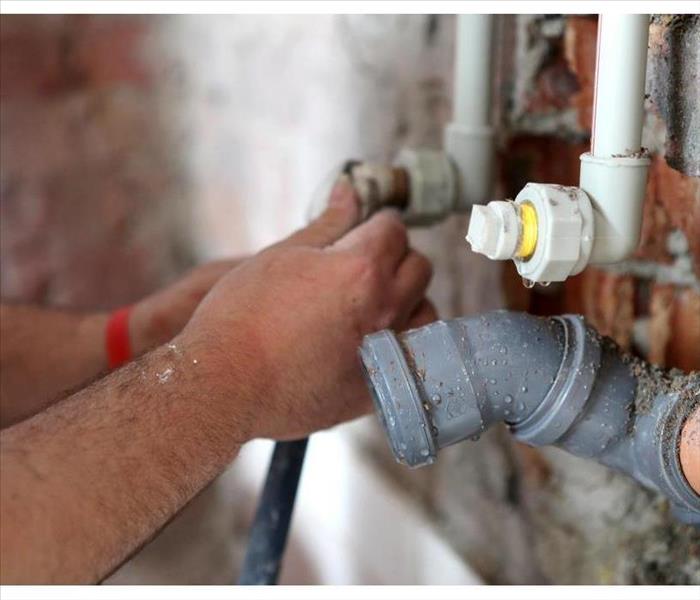 Pipes do not last forever.
Pipes do not last forever.
When Should You Replace the Pipes in Your House?
Pipes do not last forever. Over time, you may discover supply line damage. This could lead to a bathroom leak that necessitates cleanup and restoration services. To prevent any leaks, you should get your older pipes replaced. When to do so depends on the age of your Whitestone, NY, home and plumbing system.
Washing Machine Hoses
Many water losses result from leaks in the washing machine. To keep the appliance functioning and prevent flooding, you should replace the supply hose every three years. You should also replace the hose if you notice any of the following:
- Leaking water
- Rust
- Bubbling
- Obvious signs of damage such as kinks and cracks
Supply Pipes
Even though these pipes have to deal with constant pressure, supply line damage typically only occurs in older homes. In fact, copper pipes can last 70 to 80 years. Brass and galvanized steel pipes survive even longer than that. Still, if you do notice a supply line leak, you should get it checked out immediately.
Faucets
Faucet lines typically can be repaired without having to replace the pipes. However, if you find yourself constantly fixing the faucet, it may be time for an upgrade. Some people also replace their faucet pipes purely for efficacy reasons.
Drain Pipes
Cast-iron drain pipes are meant to last 80 to 100 years. Yet if your drain lines are made of plastic, they may only last 25 years. A storm or tree root can easily damage these lines, as well.
Toilet Pipes
Different parts of your toilet last varying amounts of time. The wax seals only need to be replaced every 20 or 30 years. However, the valves, fittings, flappers, and levers have a lifespan of just four or five years.
Major supply line damage usually occurs only when those pipes are old. However, other pipes in your home can wear down over time, especially lines made of plastic. Those lines should be replaced periodically before a huge leak occurs.
How To Maintain Fire Sprinklers in Your Building
3/8/2022 (Permalink)
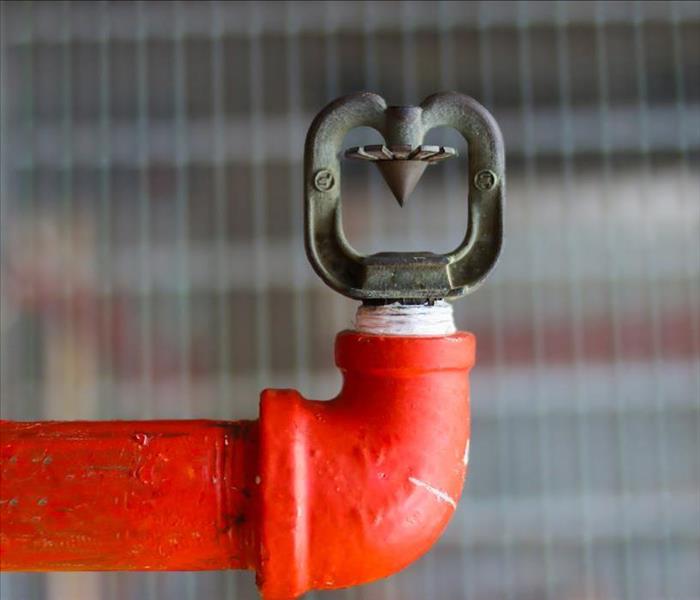 All deluge system gauges should be inspected weekly.
All deluge system gauges should be inspected weekly.
Fire Sprinkler Maintenance Steps
A properly functioning sprinkler system can save lives. Sprinkler maintenance should be part of the safety plan for every building. Regular maintenance of sprinkler systems is essential in the prevention of accidental activation. Locate a sprinkler inspection company in Howard Beach, NY, that can schedule and perform these necessary maintenance steps.
1. Weekly Maintenance
A designated member of your staff trained in the standards and local codes can perform the weekly maintenance to ensure there is proper air and water pressure on the dry, pre-action, and deluge system gauges. All gauges should be inspected weekly, or possibly monthly depending on your system. Wet pipe systems should be checked monthly. All inspections should include looking for signs of physical damage.
2. Quarterly Maintenance
Outside of the weekly maintenance, a licensed fire protection technician should conduct all testing and maintenance. Every three months all alarm systems should be inspected as well as the connection to the fire department.
3. Yearly Maintenance
Yearly sprinkler maintenance includes the inspection of buildings, bracings, pipes, fittings, and fire sprinklers. In addition to physical inspection, several things should be tested each year. Control valves, alarm switches, gauges, backflow preventers, anti-freeze loops, fire department connections, and visible piping should all be inspected and tested to make sure they are functioning properly. Running a test for dry, pre-action, and deluge systems is also recommended on a yearly basis.
4. Maintenance Every Five Years
Hoses, connections, and piping should be inspected every five years. Testing of standpipes, internal pipe inspections, and obstruction investigations should also be conducted every five years.
A functional and reliable sprinkler system should be a priority for every building owner. They act as both a warning system and a lifesaver. Accidental activation of a sprinkler system can cause costly water damage that may require water damage restoration. Keeping up with regular sprinkler maintenance can help prevent the need for cleanup from easily avoidable water damage.
 Water damage in homes and properties can result in more than just physical damage and costly repairs; it can also lead to mold and mildew growth.
Water damage in homes and properties can result in more than just physical damage and costly repairs; it can also lead to mold and mildew growth.





 24/7 Emergency Service
24/7 Emergency Service





